Black Dragons, directed by William Nigh and released in March 1942, is a compact, 64-minute specimen of wartime popular cinema that a seasoned critic can reasonably describe as bearing hallmarks of a film noir movie — if not in strict genre taxonomy then certainly in mood, visual implication, and moral ambiguity. Starring Bela Lugosi, Joan Barclay, and George Pembroke, with a supporting turn from a young Clayton Moore, Black Dragons keeps a steady, economical pace while advancing a plot of impersonation, sabotage, and conspiratorial menace. This assessment treats Black Dragons as a film noir movie in sensibility: a shadowy world of hidden identities, compromised institutions, and a protagonist trapped between duty and deception.
Outline
- Introduction and thesis: why Black Dragons can be read as a film noir movie
- Background and production context
- Detailed plot overview
- Characters and performances
- Thematic analysis: identity, subversion, and secrecy
- Visual and technical elements: cinematography, editing, and music
- Historical context and wartime urgency
- Reception and legacy
- Final verdict and viewing recommendations
- Cast and credits appendix
Introduction: Black Dragons as a Film Noir Movie in Mood and Method
The term film noir movie is often reserved for a narrow band of late-1940s and 1950s crime dramas. Yet the phrase is useful when discussing films that share noir's core features: moral ambivalence, conspiratorial plots, shadow-drenched atmospheres, and protagonists who navigate betrayal and mimicry. Black Dragons does not need reclassification to be appreciated; instead, it invites readers and viewers to consider how a wartime spy thriller leans on noirish devices to deliver tension. As a film noir movie of sorts, Black Dragons combines espionage and impersonation with a compact narrative drive that yields concentrated thrills and anxiety.
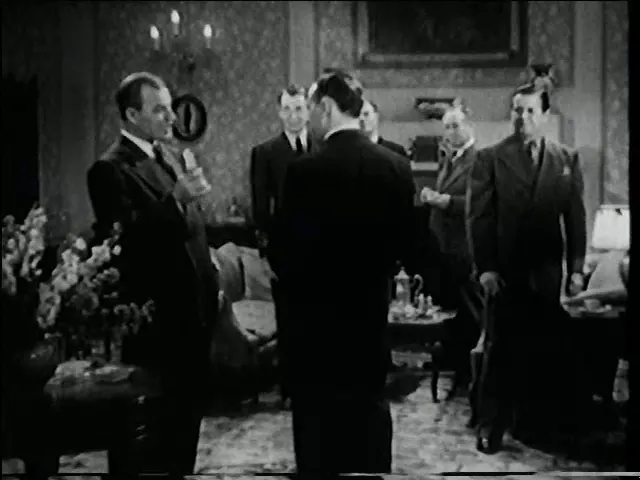
In this critical essay the film is discussed through the dual lenses of its documented production history and its onscreen content. Sources for this analysis are the film itself and the extant production record: director William Nigh's stewardship, the presence of Bela Lugosi in the cast, the hurried January 1942 production schedule pushed forward in the wake of Pearl Harbor, and the film's distribution through Monogram Pictures.
Background and Production Context
Black Dragons was fast-tracked into production in the tense early months of 1942. According to production records, principal photography was set to begin on 17 January 1942 but was pushed back to begin on 21 January, a scheduling change that reflects the film industry's sudden pivot toward explicitly wartime subject matter. With a release date of March 6, 1942, Black Dragons emerges as a direct cinematic response to the national emergency. This compressed schedule and the film's 64-minute runtime are typical of low-budget programmer features of the era, particularly those produced by companies such as Banner Pictures Corporation and distributed by Monogram Pictures.
The decision to cast Bela Lugosi in the film connects Black Dragons to the actor's larger career arc as a figure who, by the early 1940s, was often deployed in productions that emphasize menace, eccentric intelligence, or both. Lugosi's Dr. Melcher — also credited as Monsieur Colomb in certain sequences — anchors the film's more uncanny moments, giving credence and theatricality to the conspiratorial narrative. The production team included director William Nigh, screenwriters Robert Kehoe and Harvey Gates, and producers Jack Dietz and Sam Katzman, figures who were adept at generating efficient genre fare for popular audiences.
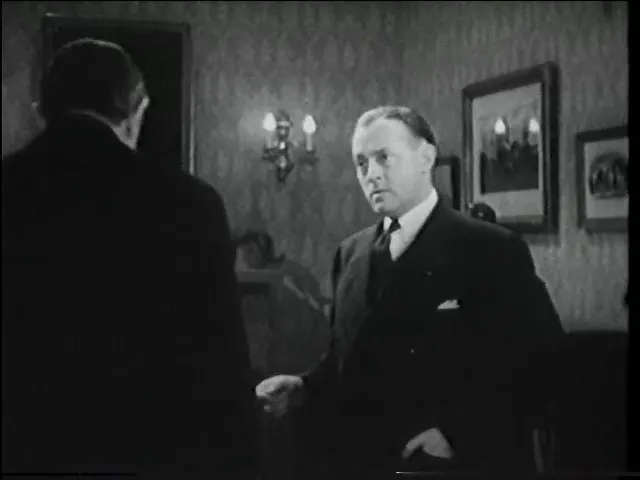
The Wartime Production Imperative
Black Dragons must be read in the context of urgency. The film's original working title, The Yellow Menace, indicates the intent to foreground enemies external to the Allied cause. The film's rush into production after Pearl Harbor is not only a scheduling fact but a shaping principle: the contemporary audience expected films that reflected wartime anxieties, exposed sabotage, and reaffirmed national vigilance. That urgency is visible on screen: dialogue frequently references military installations, ammunition depots, industrial mobilization, and the potential for sabotage, thereby converting ordinary civic institutions into plausible targets of subversion.
Plot Overview: Surgical Duplicity and a Trail of Death
At its narrative core Black Dragons presents a twofold menace: a foreign society bent on replacing American leaders with engineered doubles, and the ethical collapse of those who enable or conceal the conspiracy. The film opens amid conversations about war production and military logistics: references to shipyards, ammunition dumps, and troop deployments contextualize the stakes. Men in power discuss appropriations and influence, and those interchanges quickly take on a darker aspect as conspiratorial voices narrate the possibility of using industrial and military sites for subterfuge.
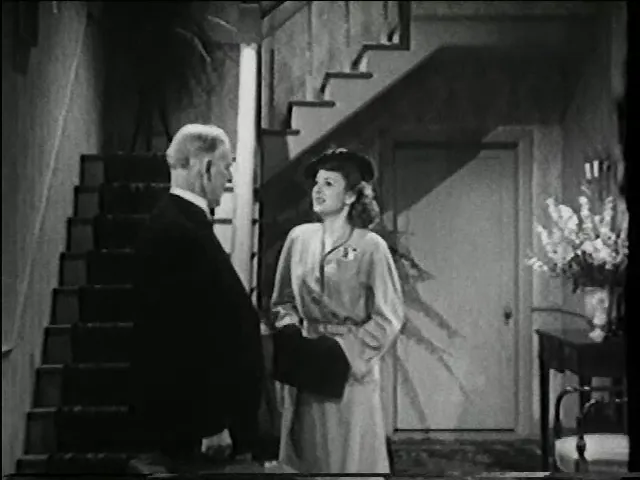
The central betrayal pivots on a brilliant scientist, Dr. Melcher, who travels to Japan to perform clandestine plastic surgeries on a group of conspirators. These Japanese operatives are transformed to resemble American industrial and civic leaders. After the surgeries, the actual leaders are murdered and replaced by their impostors. Black Dragons draws a direct line between surgical technique and political mimicry: the face becomes an instrument of sabotage. The film's reported exposition establishes that Dr. Melcher was condemned to lifetime imprisonment so the secret might die with him, a moral attempt at containment that foreshadows dramatic desperation.
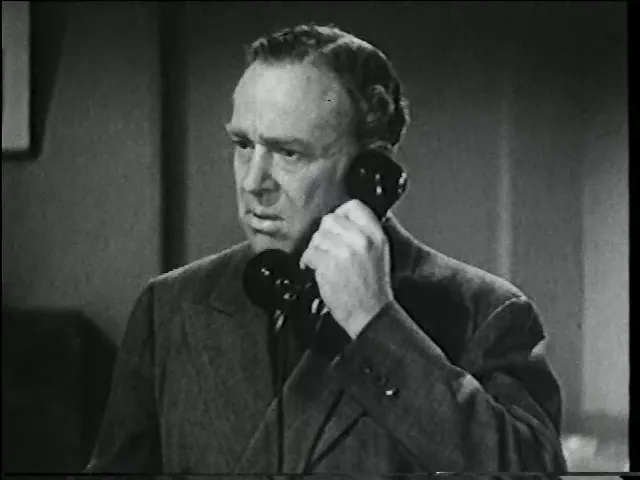
The narrative unfolds through the interlocking perspectives of detectives, FBI agents, industrialists, and members of the household where the initial set of suspects assembled. The house party at Dr. Bill Saunders' residence provides the scene-setting mechanism: guests include industrialists, bankers, and operatives whose identities the plot will interrogate. After the party, several guests are found dead under mysterious circumstances. Evidence, misdirection, and forged alibis proliferate, and the discovery of bodies dumped at a Japanese embassy ramp up the sense of external conspiracy and internal failure.
A Series of Staircases and Cellars
Multiple key scenes revolve around thresholds — basements, cellars, locked doors — which function symbolically. The cellar where a body is discovered, then inexplicably disappears, points to a narrative economy that prefers mystery and anticipation over exhaustive procedural explanation. These spaces emphasize subterranean menace and the lurking possibility that bodies, identities, and loyalties can be shifted at will.
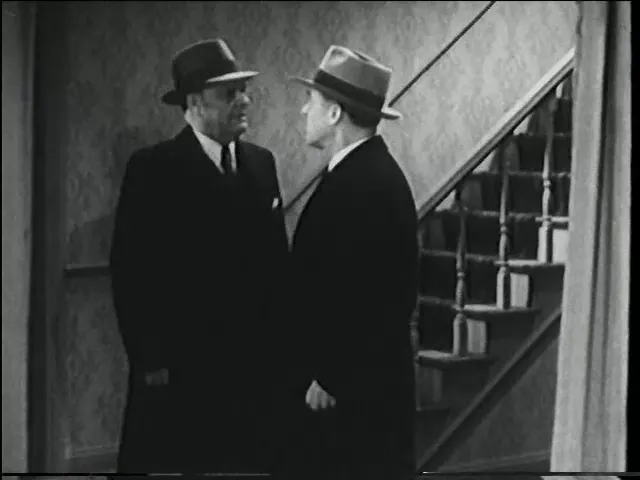
Characters and Performances: Lugosi, Barclay, and the Ensemble
Black Dragons is built on performance archetypes that the studio system and the era's casting practices favored. Bela Lugosi's Dr. Melcher stands at the film's uncanny center. Lugosi brings both theatrical intensity and a particular kind of exoticized menace that 1940s American cinema often assigned to European or foreign-born figures. The film positions him as an ethical fulcrum: brilliant, compromised, and ultimately tragic— the man who performs surgeries that enable political murder and who is later subject to violence himself.
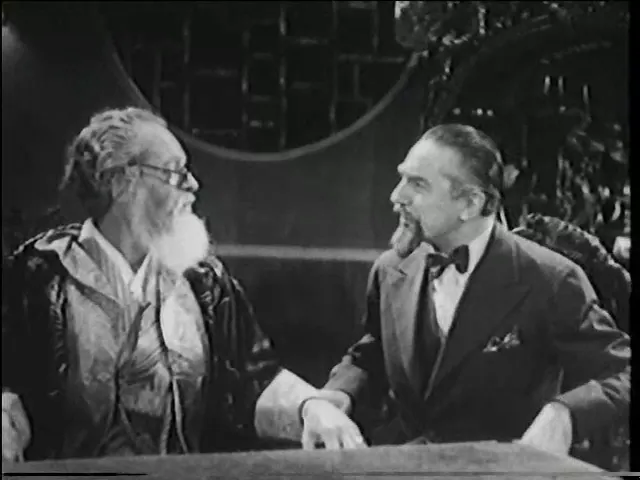
Joan Barclay, as Alice Saunders, is the film’s emotional and moral anchor. Her role typifies the resourceful and quick-witted female lead that populates thriller narratives of the period. She is the niece who returns to an uncle’s house and becomes an active participant in unraveling the mystery. Barclay’s Alice is alert, courageous, and pragmatic; she oscillates between concern for family and the imperative to confront danger.
George Pembroke as Dr. Bill Saunders, Robert Frazer as Amos Hanlin, Clayton Moore as Dick Martin, and other supporting players construct a gallery of professional men — bankers, industrialists, detectives — whose social standing makes them suitable targets for impersonation. Each performance is economical, serving plot movement with economical gestures rather than florid characterization. In ensemble work like this, the actor’s job is to populate an atmosphere of suspicion, which the cast accomplishes efficiently.
Clayton Moore and the Detective Archetype
Clayton Moore’s Dick Martin exemplifies the competent detective figure who can be charming and decisive without being spectacularly heroic. Moore's screen persona here is a template he would refine later in his career. His presence anchors certain procedural beats in the plot: the investigation, the stakeouts, the tactical decisions that aim to flush the conspiracy into the open. Within a film that moves briskly, Moore’s part supplies the connective tissue between exposition and resolution.
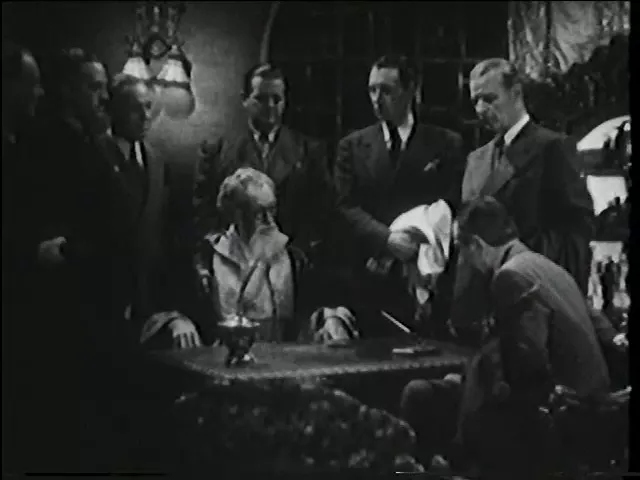
Thematic Analysis: Identity, Subversion, and the Ethics of Disguise
One of Black Dragons' central preoccupations is the ease with which appearances can be manufactured. The film literalizes the notion of political mimicry: surgical techniques create lookalikes who then supplant the real leaders. This is where the film’s noir resonance is most apparent. The noir tradition — broadly considered — is invested in deception, doubles, and the unreliability of surfaces. Black Dragons extends that preoccupation outward into national and institutional space: the country itself becomes vulnerable to a face-forged infiltrator.
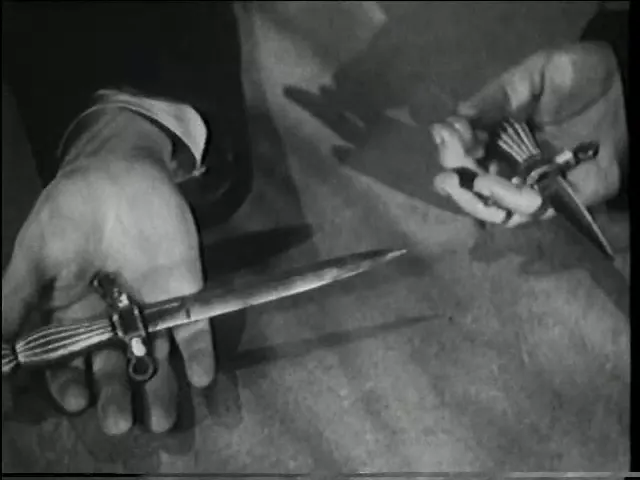
The film interrogates the relationship between science and ethics. Dr. Melcher’s surgeries are depicted as acts of technical mastery stripped of moral restraint. The surgeon’s art becomes a mechanism of political violence. In classic noir terms, the protagonist’s rationality is compromised by an external system of corruption; in Black Dragons that system is transnational, utilitarian, and clandestine. The film posits a horror particular to the wartime imagination: that technology and expertise can become instruments of national betrayal.
Conspiracy and Moral Ambivalence
Black Dragons does not dwell in moral complexity for very long — it has a bounded runtime and an agenda — but it does create a world where institutions that ought to be defensible (bankers, industrialists, scientists) are precisely those most readily subverted. The film’s ethical discomfort comes from the notion that normal civic operations — industrial appropriations, shipping logistics, even social gatherings — can be co-opted. That sense of contamination, of the taint that spreads through corridors of respectability, is a core noir impulse.
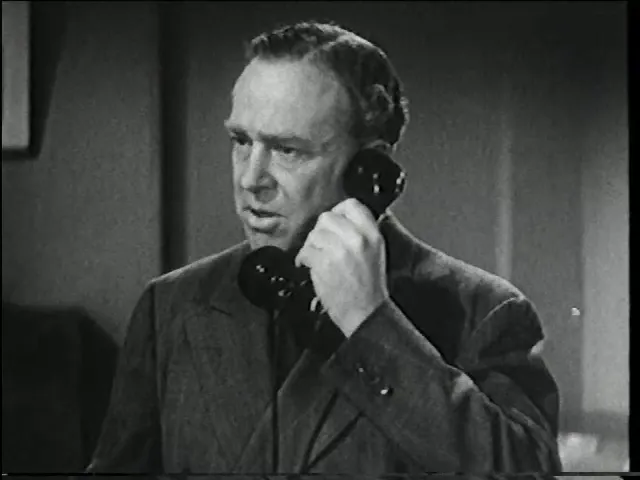
Visual and Technical Elements: How the Film Creates Unease
Black Dragons employs a cinematic economy that relies on brisk cutting, close framing for dramatic reveals, and set pieces that trade on contrast — the safety of a stately home versus the darkness of a cellar; the daylight world of offices versus night-time conspiratorial meetings. Arthur Reed’s cinematography and Carl Pierson’s editing (as indicated in production credits) contribute to the film’s efficiency, compressing suspense into short scenes that are designed to propel the action forward.
The score, credited to Johnny Lange, Lew Porter, and Heinz Roemheld, provides musical punctuation rather than thematic complexity. It supports the film’s moods — urgency, fear, and revelation — without dominating the action. This is consistent with the era’s studio practice in modestly budgeted programs: music enhances tone and furthers momentum in service to plot economy.
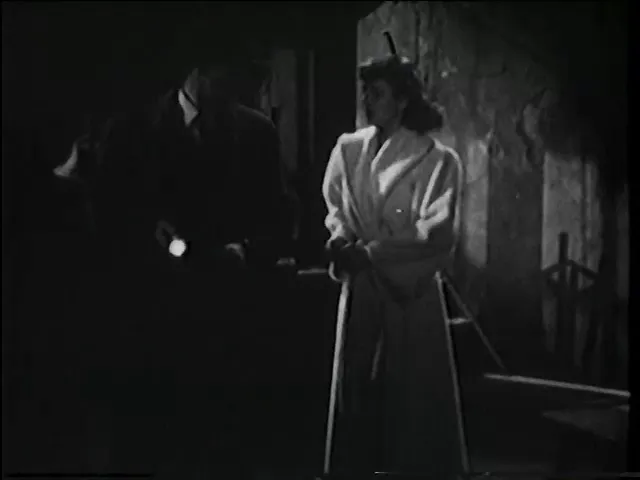
Set Design and the Aesthetics of Confinement
Set design favors domestic interiors that can be made ominous: locked doors, basements, and rooms where the unseen can be suggested even when it is not shown. The cellar becomes a metaphorical no-man’s land where truth is buried and then unearthed. The film uses such spaces to suggest that tests of loyalty take place not on grand battlefields but in intimate, domestic settings — a small, chilling inversion that enhances paranoia.
Historical Context: Wartime Sentiment and Propaganda Impulses
Black Dragons reflects the anxieties of its moment. The film was rushed into production following the attack on Pearl Harbor, and that urgency explains both its thematic choices and its production pace. The presence of an organization invoking the Black Dragon Society along with an implied Nazi connection serves the dual wartime narrative of multifront conspiracy: the enemies of the United States are numerous and cunning.
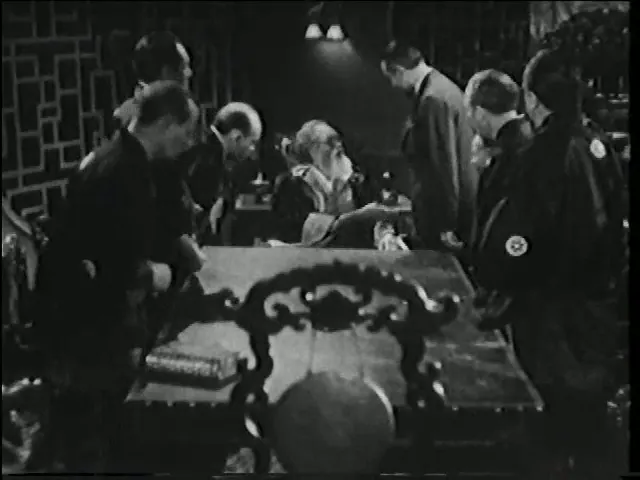
Such narratives were part entertainment, part public reassurance: the story reveals the mechanism of sabotage, thereby telling audiences what to fear and how vigilance might respond. The film was released during a period when Hollywood and the public were adjusting to the realities of total war, and it participates in a culture of vigilant suspicion that foregrounded enemy deception. Black Dragons not only dramatizes infiltration but also offers a cinematic method for showing how infiltration might occur and how it might be revealed.
Rushed Production and Ideological Clarity
Because Black Dragons was produced quickly, it favors clear moral delineations over subtle portraiture: conspirators are conspirators, victims are victims, and the narrative drive is toward exposure. This clarity is functional: in wartime, audiences often preferred films with decisive moral arcs. Yet, within that decisiveness, Black Dragons preserves noirish texture in its focus on disguise, false identity, and the unease of everyday places turned threatening.
Reception and Legacy: Contemporary and Later Responses
Contemporary reception was mixed but generally acknowledged the film’s capacity to thrill. The Los Angeles Times observed that "those who love their mystery and their Lugosi will find this film unusually sinister." That succinct appraisal highlights what the film offers most distinctly: Lugosi’s presence and a sinister atmosphere. The film’s quick production did not prevent it from being paired theatrically with diverse fare—its Los Angeles release was on a double bill with an Australian film—contributing to a varied exhibition context that reached a broad audience.
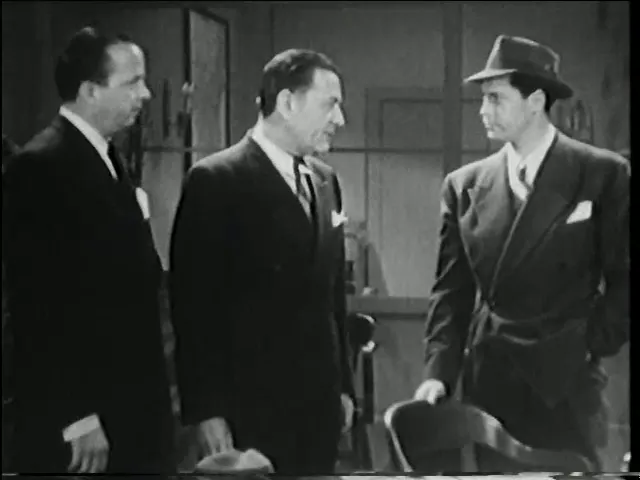
In later years, Black Dragons was colorized in the 1990s, a transformation that emphasizes the film’s afterlife in home viewing and television cycles. The colorization decision points to a continuing interest in preserving and repackaging wartime thrillers for new audiences, acknowledging that the film’s utility as historical artifact and entertainment persisted beyond its initial theatrical run.
Critical Appraisal: Strengths and Weaknesses
Strengths: The film’s brisk pacing, Lugosi’s magnetic presence, and its ability to channel wartime anxiety into a compelling, if schematic, story are its chief virtues. The script by Robert Kehoe and Harvey Gates sketches a scenario that is both chilling and efficient: surgeons convert bodies into political tools, and a detective cast mobilizes to uncover the network.
Weaknesses: Economies of budget and time show in occasional lapses of logic, in underdeveloped secondary characters, and in the film’s tendency to prioritize plot-saving reveals over character exploration. Those are typical constraints of programmer pictures. From a modern perspective, one might find the film’s attitude toward nationality and race problematic; the era’s conventions shaped representational choices that today demand critical contextualization.
Final Verdict: Viewing Black Dragons as a Film Noir Movie Case Study
When a critic insists that Black Dragons can be approached as a film noir movie, the claim is not a gesture of reclassification but an invitation to read the film’s noirish echoes: shadows of ambiguity, silhouettes of identity theft, and a tone of system-wide paranoia. The film’s narrative economy — its terse length and concentrated set pieces — makes it an excellent case study for how the noir mood was available across genres long before the term film noir movie became a critical shorthand.
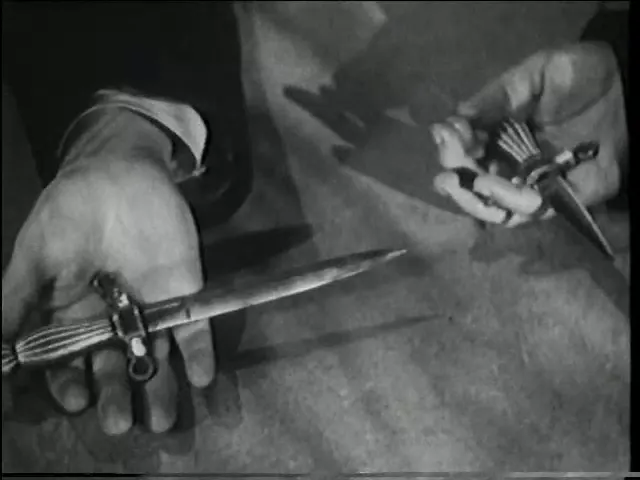
Black Dragons rewards viewers who seek to trace noir tendencies across genre boundaries. It is not noir in the canonical, heavyweight sense, but it shares structural and atmospheric affinities with films that would later consolidate the noir vocabulary. The dangers it explores — impersonation, the corruption of expertise, the fragility of public institutions — remain sharp and resonant, and the film’s compact architecture ensures that these themes are always foregrounded.
Who Should See Black Dragons?
- Students of wartime cinema who want a capsule example of rapid-production propaganda-adjacent genre work.
- Fans of Bela Lugosi interested in his less-commonly cited performances outside the strict horror cycle.
- Viewers interested in how classic cinema blends genre elements — espionage, mystery, and noir — into efficient programmer features.
Approaching Black Dragons as a film noir movie case study will assist viewers in noticing the film’s use of shading, both literal and figurative. The film’s compressed storytelling yields intense moments that, when assembled, create a texture of unease and suspicion that is, in many ways, the hallmark of noir-inflected cinema.
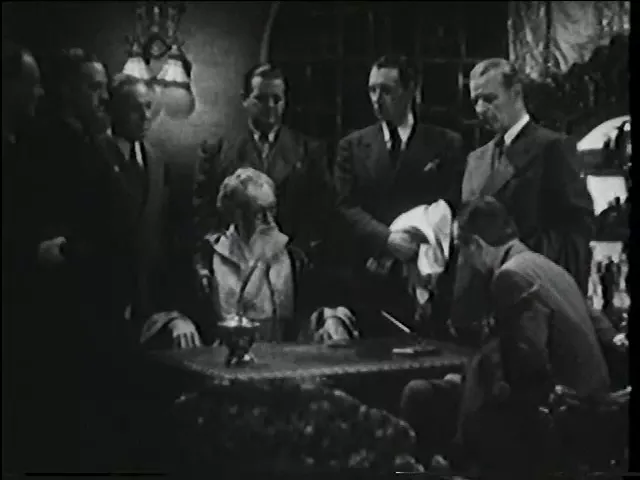
Practical Viewing Notes and Preservation
Black Dragons is available for free viewing and download at public archives, and collectors may encounter colorized versions from the 1990s. Those interested in preservation should seek original black-and-white prints or reputable digital restorations where possible, because the film’s tonal qualities — the contrast, the shadows, the staging of suspense — are best appreciated in the format in which they were conceived.
About the Film's Public Reception and Subsequent Handling
The film's release on a double bill indicates how studio-distributed programmers were exhibited: paired with other titles, framed as part of a communal cinematic experience. Contemporary critics and later historians have noted Black Dragons primarily for Lugosi's performance and for its sensational plot. Modern viewers can approach it both as a historical artifact and as a lively example of how classical Hollywood responded to crisis through genre cinema.
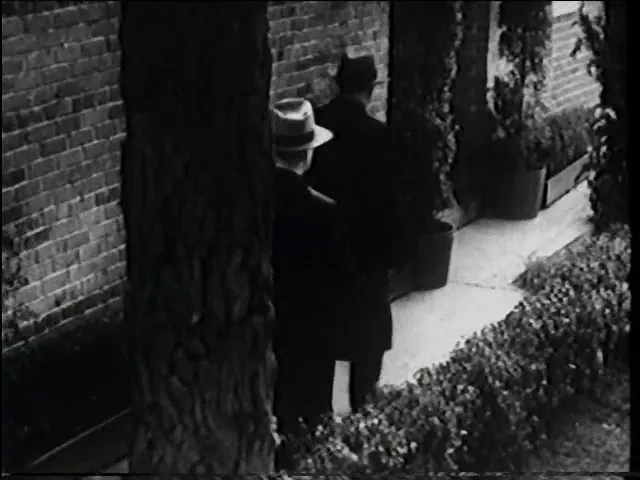
Appendix: Cast, Credits, and Running Details
Director: William Nigh
Writers: Robert Kehoe, Harvey Gates
Producers: Jack Dietz, Sam Katzman (associate producer: Barney A. Sarecky)
Starring: Bela Lugosi (Dr. Melcher / Monsieur Colomb), Joan Barclay (Alice Saunders), George Pembroke (Dr. Bill Saunders)
Supporting: Clayton Moore (Dick Martin), Robert Frazer (Amos Hanlin), Edward Peil Sr. (Philip Wallace), Robert Fiske (Ryder), Irving Mitchell (John Van Dyke), Kenneth Harlan (FBI Chief Colton), and others.
Running time: 64 minutes
Production company: Banner Pictures Corporation
Distributor: Monogram Pictures Corporation
Release date: March 6, 1942
Closing Thoughts: Why Black Dragons Still Matters in Classic Cinema Conversations
Black Dragons endures as a filmic artifact that tells an acute story about national anxiety, technological perversion, and the dangers of surface trust. For a critic who reads elements of film noir movie in older films that prefigure or overlap with noir conventions, Black Dragons offers a compact and instructive example. It demonstrates how classical Hollywood could graft noirish sensations onto espionage narratives to create a thrilling, if not entirely polished, emotional experience.
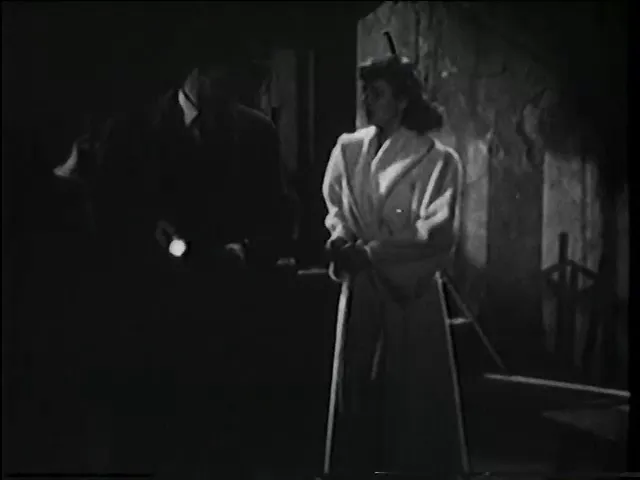
As a film noir movie-adjacent title, Black Dragons contributes to a larger history of how genre cinema processed wartime fear. It uses impersonation and surgical transformation as metaphors for betrayal, positioning the camera to watch faces that cannot be trusted. That theme — that identity can be manufactured and that institutions can be hollowed from within — resonates with audiences precisely because it addresses the insecurities of its historical moment while articulating timeless anxieties about who the nation can rely upon in times of crisis.
Encouragement to View and Discuss
Classic cinema enthusiasts and students of genre are encouraged to watch Black Dragons with attention to both performance and production. The film rewards those willing to trace the genealogy of noir sensibilities across the 1940s and to observe how wartime exigencies shape narrative choices. Because the film is concise, it is ideally suited for classroom screenings, double-feature revivals, and online critical conversations that probe how cinema responds to geopolitical threats.
In short, while Black Dragons may not fit every strict definition of a film noir movie, it undeniably shares the mood and concerns that define noir: darkness, duplicity, and the precariousness of trust. As such, it is a rewarding object of study for anyone interested in classic cinema's negotiation of genre, politics, and the specter of the double.
